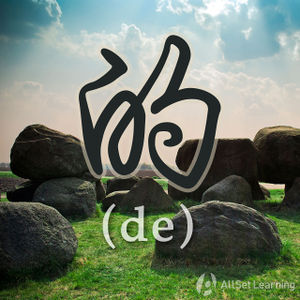Reduplication of adjectives
-
Level
-
Similar to
-
Used for
-
Keywords
One of the charming features of Chinese is reduplication (repeating, or doubling up) of certain words and characters, including adjectives! Reduplication makes the descriptive feeling of the adjective stronger.
Contents
One-Syllable Adjectives (AA)
If an adjective is only one syllable (one character), then reduplicating it is a no-brainer. In most Chinese textbooks and grammar books, this is known as the "AA" pattern.
Structure
Adj + Adj + 的 (+ Noun)
Another way of putting that (and we'll be using this form more extensively below) is:
A A + 的 (+ Noun)
Note that this pattern is also identical to single-syllable reduplication of verbs.
Examples
- 妈妈的手 暖暖的。Mother's hands are warm.
- 你的 脸 红红的。Your face is red.
- 果汁 甜甜的。Fruit juice is sweet.
Two-Syllable Adjectives (ABAB)
If the adjective has more than one character, then you should repeat each character individually (rather than the whole word). This is known as the "AABB" pattern.
Structure
In the structure below, the original two-character adjective (such as 高兴, 漂亮) is "AB," where the first character of the adjective is represented by "A," and the second by "B."
A A B B + 的 (+ Noun)
Examples
- 高高兴兴happy
- 漂漂亮亮pretty
- 舒舒服服comfortable
- 辛辛苦苦hard
Using Reduplicated Adjectives as Adverbs (AABB)
When adjectives are used as adverbs to modify verbs, you can reduplicate the adjective using the AABB pattern.
Structure
A A B B + 地 + Verb
Examples
- 过年 的 时候 ,我们 全 家人 都 聚 在 一起 ,热 热 闹 闹 地 吃 年夜饭 。At Chinese New Year, our whole family gathers together and joyously shares a New Year's Eve meal.
Using Reduplicated Adjectives as Predicates (ABAB)
If you use an adjective as a predicate, then you're basically using the adjective like a verb, and you reduplicate it as you would a verb, which means ABAB form. Using an adjective in this way is roughly equivalent to using 一下 after the (non-reduplicated) adjective.
Structure
To use a reduplicated adjective as a predicate, follow this structure:
Subject + A B A B
In the pattern above there's no verb, because when an adjective serves as the predicate, it does the job of a verb. Notice also that there's no 的 after the ABAB, because it's not acting as an adjective.
The above structure is essentially equivalent to this one:
Subject + A B + 一下
Examples
- 结婚 的 时候 ,人们 喜欢 热闹 热闹。People prefer to set off the fireworks to celebrate when they get married.
- 妹妹 快 过 生日 了 ,我 打算 给 她 办 一 个 生日 派对 ,热闹 热闹 。My little sister's birthday is coming and I'm going to celebrate it by throwing her a birthday party.
Note: The "AABB" pattern for reduplication of two-syllable adjectives contrasts with the "ABAB" pattern for reduplication of two-syllable verbs.
Sources and further reading
Books
- Integrated Chinese: Level 1, Part 2 (3rd ed) (p. 53) →buy
- Integrated Chinese: Level 2, Part 2 (pp. 189-90) →buy
- Mandarin Chinese: A Functional Reference Grammar (pp. 32-6) →buy
- New Practical Chinese Reader 3 (新实用汉语课本3) (pp. 50) →buy
- New Practical Chinese Reader 4 (新实用汉语课本4) (pp. 103-4) →buy
- 40 Lessons for Basic Chinese Course (基础汉语40课上册) (pp. 271-2)→buy



